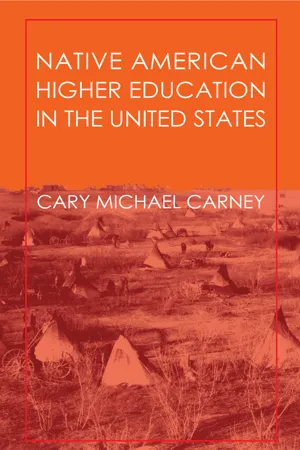Indian Reorganization Act
The Indian Reorganization Act, also known as the Wheeler-Howard Act, was passed in 1934 and aimed to reverse the assimilationist policies towards Native American tribes. It encouraged tribal self-government and provided funding for economic development and land acquisition. The Act also sought to preserve Native American culture and traditions, marking a shift towards a more respectful and inclusive approach to tribal sovereignty.
3 Key excerpts on "Indian Reorganization Act"
- eBook - ePub
First Americans: A History of Native Peoples, Combined Volume
A History of Native Peoples, PowerPoints
- Kenneth W. Townsend(Author)
- 2018(Publication Date)
- Routledge(Publisher)
...Housing remained grossly inadequate, educational opportunities were limited, and health services proved incapable of serving the peoples’ basic needs. Revitalization of traditional tribal structures and cultural values, he argued, would only perpetuate poverty and prevent assimilation, which he considered the Indians’ only avenue toward survival. Many white Americans who opposed the Wheeler-Howard Bill echoed Morgan’s assessment, saying that the legislation “does not give Indians much leeway not to be Indian, and to walk Main Street like the rest of us.” The commissioner returned to Washington and drafted more than two dozen amendments to the Wheeler-Howard bill that addressed Indian concerns. Reading History Excerpts from the Indian Reorganization Act (Wheeler-Howard Act), June 18, 1934 The Indian Reorganization Act, enacted in 1934, was an effort championed by Commissioner of Indian Affairs John Collier to restructure fundamentally the relationship of Native Americans to the federal government, improve substantially living conditions on Indian reservations, and revitalize many traditional features of native cultures. An Act to conserve and develop Indian lands and resources; to extend to Indians the right to form business and other organizations; to establish a credit system for Indians; to grant certain rights of home rule to Indians; to provide for vocational education for Indians; and for other purposes. BE IT ENACTED by the Senate and House of Representatives of the United States of America in Congress assembled, that hereafter no land of any Indian reservation, created or set apart by treaty or agreement with the Indians, Act of Congress, Executive order, purchase, or otherwise, shall be allotted in severalty to any Indian. Section 2. The existing periods of trust placed upon any Indian lands and any restriction on alienation thereof are hereby extended and continued until otherwise directed by Congress. Section 3...
- eBook - ePub
- Deloria Vine, Clifford M. Lytle(Authors)
- 2010(Publication Date)
- University of Texas Press(Publisher)
...John Collier, director of the American Indian Defense Association and the Interior Department’s most persistent and energetic critic, was named Indian commissioner, and a superb group of legal minds, including Felix S. Cohen and Nathan Margold, was authorized to begin working on major legislation to solve Indian problems. The result was a four-titled bill presented to Congress early in 1934 that incorporated most of the recommendations of the Meriam Report and featured some of Collier’s own ideas on cultural renewal and reorganization. In order to gather Indian support for his ideas, John Collier organized a series of Indian congresses across the country to which all the major tribal delegations were invited. Although the Indians objected to some of the provisions of the legislation, on the whole there was sufficient Indian support to enable the administration to get an amended version of the legislation passed in June of 1934. This act, the Indian Reorganization Act (IRA), popularly known as the Wheeler-Howard Act after its sponsors in the Senate and House of Representatives (25 U.S.C.A. § 461), formally ended the government’s policy of allotment. Section 1 stipulated that “no land of any Indian reservation. .. shall be allotted in severalty to any Indian.” The first great experiment in social engineering was now officially disclaimed although the damage it had created remained to be repaired. The act also prevented the alienation (transfer) of Indian land or shares in tribal corporations other than to the tribe itself. The secretary of the interior, however, was given some discretionary powers to authorize voluntary exchanges of land in order to bring about better consolidation of land resources for economic purposes...
- Cary Carney(Author)
- 2017(Publication Date)
- Routledge(Publisher)
...The Collier Bill also required Congress to promote and preserve Indian culture via grants and appropriations. This was the first direct federal move away from Native American cultural extinction (Deloria and Lytle, 1984). Of all the bills of this period, the most significant was the Indian Reorganization Act of 1934. Its principal feature was a renewed recognition of tribal governments, and with it, tribal sovereignty, a sweeping reversal of past federal policy (Deloria, 1993; Wright and Tierney, 1991). Specifically, it ended the Dawes allotment policy, and allowed and encouraged the tribes to set up written constitutions. In rescuing the idea of tribal sovereignty and the status of "dependent domestic nations" from the past, the Act ruled these rights were inherent, having existed since before the existence of the United States. They were not granted by the United States as part of the guardian-ward relationship, but were retained by the tribes through past treaties that could not be extinguished (Deloria, 1993; Falmouth Institute, 1992; Prucha, 1984). Eleven years later, New Dealer Felix Cohen reiterated this emphatic defense of Indian sovereignty in his Handbook of Federal Indian Law: Perhaps the most basic principle of all Indian law, supported by a host of decisions hereinafter analyzed, is the principle that those powers which are lawfully vested in an Indian tribe are not, in general, delegated powers granted by express acts of Congress, but rather inherent powers of a limited sovereignty which has never been extinguished. Each Indian tribe begins its relationship with the Federal Government as a sovereign power, recognized as such in treaty and legislation. The powers of sovereignty have been limited from time to time by specified treaties and laws designed to take from the Indian tribes control of matters which, in the judgment of Congress, these tribes could no longer be safely permitted to handle...


